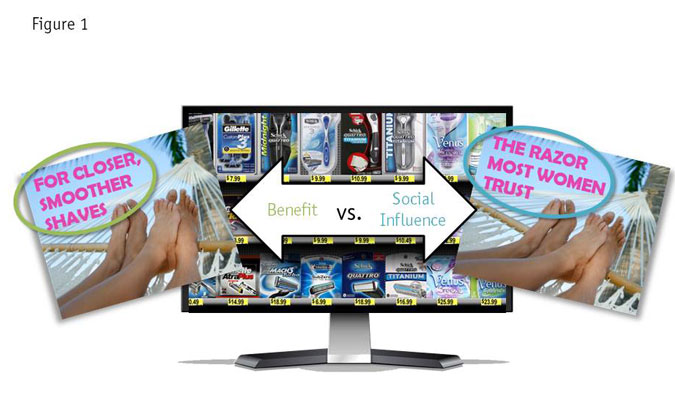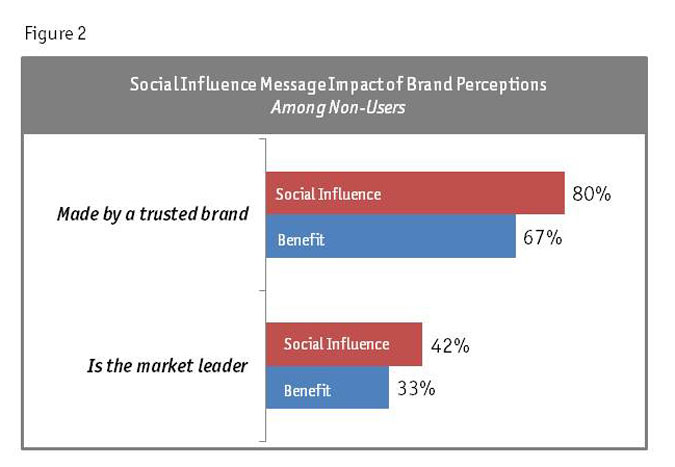Editor's note: Valla Roth is director of communications for Decision Insight, a Kansas City, Mo., research firm. She is based in Minneapolis. This article appeared in the May 7, 2012, edition of Quirk's e-newsletter.
Paul Conner, vice president, behavioral science, at Sentient Decision Science Inc., wrote an article in the March 26, 2012, Quirk's e-newsletter defining behavioral economics and how marketers can apply it to improve sales of their products and services. Conner concluded his article by saying, "Behavioral economics phenomena emerge from rigorous science, examining actual consumer choices in experimental studies. As you explore ways to frame promotions, set price expectations, set defaults, prime goals, choose targets or whatever your marketing activities, take the time to develop and experimentally test hypotheses. This can save - and even make - you money in the long run."
As a follow-up to Conner's article, I'd like to share with you an experiment that Decision Insight conducted to learn more about how a behavioral economics principle affects shopper behavior. We started by asking ourselves: How do shoppers make decisions? What influences them at the shelf?
Influencers have changed
In the past, key influencers have been limited to traditional advertising, consumer promotions (i.e., coupons, sampling, etc.); trade promotions (i.e., price reductions, displays, etc.); and word-of-mouth from family and close friends. With the advent of social media, our influencers have changed, broadening in both reach and scope. Microsoft's Bing search engine can pull in a user's friends' Facebook likes and display them with search results. Even total strangers can now impact the choices we make by leaving online comments and reviews.
This notion of tapping into the wisdom of the crowd aligns nicely with the behavioral economics principle of social influence or social proof. Instead of using rational decision-making based on expected value and marginal utility as traditional economics would suggest, we often use less-rational approaches, such as looking to outside influences to make choices. This is especially true when we have limited time and resources to study the alternatives and when there may be a social pressure to perform. In Influence: Psychology of Persuasion, author Robert Cialdini describes social proof: "It states that one means we use to determine which is correct is to find out what other people think is correct."
With this background in mind, we were curious as to how much social influence messaging - rather than rational benefits-oriented messaging - could persuade shoppers at the shelf. And, how could we make it actionable for marketers?
The experiment
Our goals were lofty:
- be more certain of how shoppers make decisions;
- translate that knowledge across multiple situations;
- identify universal marketing principles to influence shopping behavior in our favor.
To obtain this learning, we tested social influence and benefits messaging in three different consumer packaged goods categories using SimuShop, Decision Insight's online virtual shopping platform. Our key question: When and how do these two message types impact shopper purchases?
Shoppers were screened for having purchased razors, dry pasta or dish soap. Nearly 1,000 respondents virtually-shopped the category(ies) they currently buy. As part of the virtual shopping, the participants saw a shelf talker in the aisle featuring either a social influence or a benefit message for a leading brand in the category (Figure 1). After shopping, the respondents answered a series of questions about the shopping experience and messages they saw. Finally, they were shown the two message types side by side and asked which one makes them most likely to purchase the brand.

The learning
Based on our experiment, we learned two important lessons:
Lesson No. 1: What shoppers say is not what they do.
When asked directly, the benefit message is preferred two-to-one in all three categories. However, it's important to measure actual shopping behavior, not just ask shoppers what they would do. It turns out that the virtual shopping results show no difference in purchasing the brand with the different message types.
Based on this validated behavioral approach of virtual shopping, we therefore can't rule out a social influence message.
Lesson No. 2: The type of brand and the type of shopper matter.
While the virtual shopping results show no difference in purchasing based on the social influence or benefit message across all shoppers, are there pockets of shoppers where there is a difference? If so, who are they? How are they influenced?
Test the hypothesis
We revisited some of the principles of behavioral economics, particularly one from Cialdini: "In general, when we are unsure of ourselves, when the situation is unclear or uncertainty reigns, we are most likely to look to and accept the actions of others as correct." This implies that non-users of a brand may be more persuaded by a social influence message. We decided to test the hypothesis (Figure 2).

For the dry pasta and dish soap categories, there is no difference in purchasing or brand perceptions between users and non-users of the featured brand. However, for razors at price points of $12-15, it's a different story. For both intent to buy and appeal, the benefit messaging resonates with the brand's users while the social influence message resonates with the non-users. Digging a little deeper into the non-users, those who viewed the social influence message rated the brand much more favorably on "made by a trusted brand" and "is a market leader" than those seeing the benefit message.
A social product
So why did the social influence message work for non-users of razors but not for dish soap or pasta? One hypothesis is that when buying a more "social" product - one that reflects who you are - a social influence message may be more persuasive. Razors are more of a social product. They reflect who you are and how attractive you are to others. Therefore, non-users may unconsciously look for social influences or social proof to help decide what brand to buy. On the other hand, dish soap and pasta don't have the same social component.
Social influence messaging may be more effective for higher-involvement or more expensive purchases. There is more at stake. You'll want to look at the wisdom of the crowd for guidance in making an initial purchase decision. Razors may not be the highest-involvement category but they are probably more involving than dish soap or pasta, at least in terms of grocery store purchases.
Scratched the surface
We've just scratched the surface on how to apply the behavioral economics principle of social influence. From our learnings, our preliminary conclusions are twofold:
- If your strategy is to gain penetration - especially in higher-involvement categories - use a social influence message. Potential users will be persuaded by the wisdom of the crowd.
- If your strategy is to deepen the loyalty of your current users, a benefits message is best. It reinforces the reason to continue buying the brand.
Are these universal truths? We certainly can't be sure. For example, would a social influence message be even more impactful to a first-time car buyer? We suspect so. It's a very expensive purchase that also reflects a person's identity. What we can say is that it's important to test alternative messages for your brand prior to implementation and to measure the effect behaviorally - simply asking shoppers about their message preferences is not enough.
